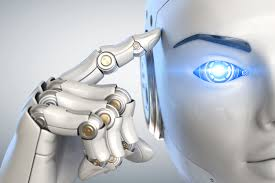
Robots: The Future Partner in Work and Production
The world today is witnessing a rapid advancement in the use of robots across various sectors. Robots are no longer confined to factories and production lines; they have become a part of our daily lives, contributing to improved efficiency, reduced costs, and enhanced safety and precision.
What is a Robot?
A robot is a programmable intelligent machine capable of performing specific tasks autonomously or by remote control. Robots vary in form and function—some resemble humans (humanoid robots), while others take the form of mechanical arms, drones, or compact devices that perform delicate operations.
Applications of Robots in Different Fields
1. Industrial Sector
-
Widely used in production and assembly lines.
-
Help increase productivity and reduce human error.
-
Can operate in hazardous environments or under tough conditions.
2. Healthcare Sector
-
Robots assist in precision surgeries (e.g., the Da Vinci surgical system).
-
Used to care for patients in hospitals.
-
Robots used for disinfection and testing, especially during the COVID-19 pandemic.
3. Service Sector
-
Robots are used to greet guests and provide information in hotels and airports.
-
Delivery and customer service robots in restaurants and shopping malls.
4. Agriculture
-
Robots for planting, irrigation, and harvesting.
-
Smart systems to monitor plant health and analyze soil.
5. Education and Research
-
Educational robots used to teach programming and AI.
-
Tools for scientific research and precision experiments.
Benefits of Using Robots
-
Increased productivity and efficiency
-
Reduced human error
-
Ability to work in dangerous or unsuitable environments
-
Lower operational costs over time
-
Continuous operation without fatigue or interruption
Challenges and Concerns
Despite their many advantages, robots present certain challenges, such as:
-
Job displacement in some traditional roles due to automation.
-
High initial cost of adopting robotic technologies.
-
Ethical and regulatory concerns around data privacy and decision-making.
-
Need for training human talent to interact with and manage robotic systems.
The Future of Robotics
The use of robots is expected to grow rapidly over the next decade, especially with advancements in artificial intelligence, high-speed connectivity (5G), and integrated smart systems. Robots will increasingly learn and adapt, making them more effective as human assistants rather than replacements.
Conclusion
Robots are no longer science fiction—they have become a strategic tool in industrial and service development. With continuous innovation, it's essential to balance the benefits of robotics with the development of human capabilities, ensuring that humans remain at the core of creativity and progress.